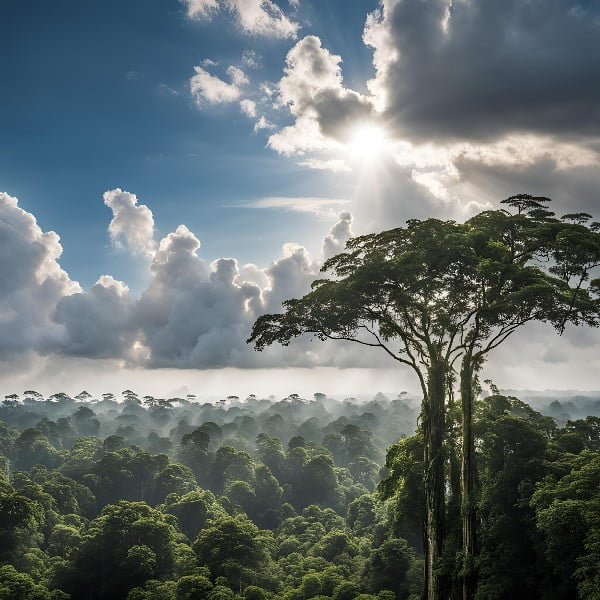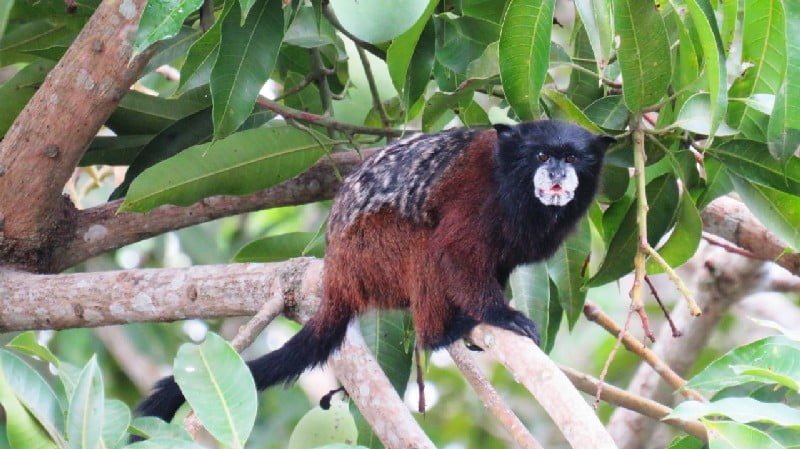What would happen if the Amazon Rainforest disappeared?
Could Anything Live Without the Rainforest?

What would happen if the Amazon rainforest disappeared? A question most people don’t really think about but the Amazon Rainforest, the largest deforestation front in the world, is currently facing a terrifying fate. With 25 different fronts located in developing nations, each one struggling to exploit natural resources for development, the situation is dire. Nearly 20% of the Amazon has already been obliterated, and experts predict that this will increase to 27% by the year 2030. But what if the destruction was total and the entire rainforest was lost to human greed?
The consequences of such an event would be nothing short of apocalyptic. Five and a half million square kilometers of barren wasteland would be left in its wake, with 390 billion trees mercilessly cut down. The entire region would suffer from extreme erosion, and the decomposition of these trees would unleash unprecedented levels of CO2 into the atmosphere, making it nearly impossible to breathe. The oceans, too, would be affected as dissolved CO2 would acidify the water, killing marine life and disrupting the delicate balance of the ecosystem.
The destruction would not end there. The loss of the Amazon Rainforest would result in the extinction of 40,000 plant species, 2.5 million insect species, 1,300 bird species, 400 mammals, and 400 amphibians. The consequences for the 31 million people who live in and rely on the Rainforest would be disastrous, with 70% of the region’s economic activity, including industries such as agriculture and tourism, disappearing overnight. The medical and pharmaceutical industries would also be decimated, as the rainforest is responsible for producing 25% of the medicinal plants used in our medicines, and less than 1% of all flowering plants in the Amazon have been studied for medicinal benefits
But perhaps the most terrifying consequence of deforestation on this scale would be the impact on the Earth’s weather systems. Without the evapotranspiration process, rainfall would drastically decrease across the entire South American continent, causing dramatic shifts in climate worldwide.
The causes of deforestation are numerous, and their effects are far-reaching. From cattle grazing to valuable hardwoods, mining to road works, and farming to medicine, human greed has pushed the Amazon Rainforest to the brink of destruction. The consequences of this destruction are terrifying and should serve as a warning to all who seek to exploit our planet’s resources without regard for the consequences.
Atlas Pro - Watch the film "What If We CLEARED the Amazon?"
(18-02-2023
The hypothetically story, told by Atlas Pro, about what would happen if the Amazon was cleared sketches a scary outcome. Luckily, the rainforest is still covering 6,7 million km² spread over nine countries: Brazil, Peru, Colombia, Venezuela, Bolivia, Guyana, Suriname, Ecuador, and French Guyana. However, the rainforest and its inhabitants are under great pressure because of forest loss for human gain. About 17 percent of the Amazonian Rainforest has been destroyed over the past 50 years, and losses recently have been on the rise. The deforestation can be attributed to many different factors at local, national, and international levels.

What are the causes of deforestation?
Deforestation is a complex issue, and there are many different causes of it.
Here are some of the most significant causes
1. Agricultural expansion: The need for more agricultural land to grow crops and raise livestock is one of the main drivers of deforestation in many parts of the world.
2. Logging: Logging for timber is another major cause of deforestation, as valuable hardwoods are harvested for export to other countries.
3. Mining: Mining for minerals such as gold, copper, and bauxite can lead to the destruction of large areas of forest as well as the pollution of rivers and other waterways.
4. Infrastructure development: The construction of roads, highways, and other infrastructure projects often involves clearing large areas of forest.
5. Population growth: As the world’s population continues to grow, the demand for land and resources is increasing, leading to more deforestation in many parts of the world.
6. Climate change: Climate change is also contributing to deforestation, as rising temperatures and changing rainfall patterns make it harder for some tree species to survive.
7. Illegal logging and land grabbing: Illegal logging and land grabbing by criminal gangs or corrupt officials is another major cause of deforestation in some parts of the world.
8. Forest fires: Forest fires, whether natural or human-caused, can cause significant damage to forest ecosystems, leading to deforestation.
9. Pulp and paper production: The production of paper and other wood-based products can also lead to deforestation, as forests are cleared to provide wood pulp for the
manufacturing process.
10.Urbanization: The growth of cities and towns often leads to the destruction of nearby forests, as land is cleared for housing and other urban development.
These are just some of the many causes of deforestation, and addressing the issue will require a comprehensive approach that involves multiple stakeholders and strategies.
What has been done?
Still, a lot of progress has been made on the forest conservation front. Some of Peru’s most biologically and economically important protected areas have been created in the last 15 years. The NICFI* reports that Peru has:
- established the Yavari Tapiche reserve for remote indigenous groups deep in the Amazon Rainforest. The area is approximately 1,100,000 hectares.
- established the national park Sierra del Division in 2015. Its 1,300,000 hectares contain largely primary forest, unique wildlife habitat, and indigenous communities.
- through its National Program of Forest Conservation, entered into forest conservation agreements with indigenous communities covering 2,900,000 hectares.
- granted forest titles to indigenous communities covering more than 1,200,000 hectares. Indigenous peoples play an important role in protecting the rainforest.
- granted rights to more than 4,800,000 hectares of rainforests through the establishment of new natural protected areas and regional conservation areas,
- and made progress in establishing a public cadastral system for land titles and in implementing policies on zoning, land-use planning, forest management, and the allocation of rights to forest resources.


